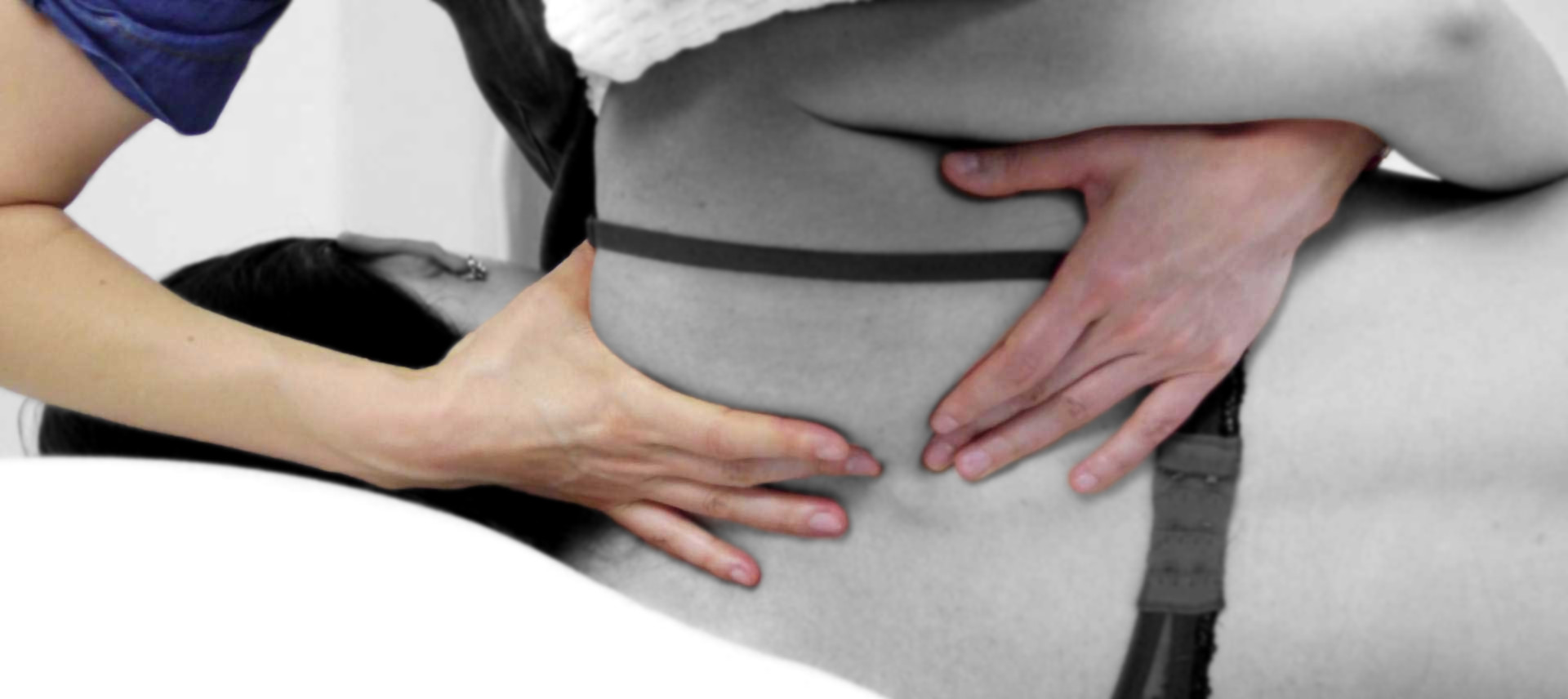A young woman in her 20s contacted me because she had back pain. The examination showed that the pain was not located in the spine but moreover on the right side towards the lower ribs. When I saw her she had already been in pain for four days, and the pain had not yet diminished. She could not bend to the side nor back and forth.
The examination of her standing position showed that her torso was severely shifted to the left side. Sitting and getting up was painful, lying down was painful and so was lifting objects.
The examination of her spine showed increased tensions on the lower lumbar vertebra, L3, as well as on the middle-lower thoracic vertebra T8-T10.
She mentioned that she could not go to the toilet in four days. Even more severe, on her third day, she had thrown up after eating. Palpation of the lower right abdomen increased the pain. Yet, she did not have fever. The rebound test for appendicitis was negative, and so was the pinch-an-inch-test for peritonitis. The patient was alert and recounted what happened to her in a coherent way.
Further osteopathic examination showed a decreased movement (osteopaths call it motility) of the small intestines as well as of the colon. The belly area was slightly colder than the surrounding tissue.
The young women had gone through an acute, high peak stress for three days before the pain had set in.

What could it be?
As an osteopath it is my duty to carefully examine the patient. And by the smallest doubt and any sign of inflammation or fever to send her straight to urgency. In her case, she did not show signs of urgency.
I assumed, that the acute high peak stress she had experienced had severely influenced her digestive function. Under the increased mental stress, the digestive organs could not perform their work as well as usual.
You might have heard about the “fight and flight response” of the body. Under high stress, the body ceases to digest and switches to defense mode. How does the body do that? By the help of the central nervous system giving the order to direct the blood flow away from the digestive organs and bringing it to the brain and the muscles in the legs – in order to help us to run or to fight. We only have a limited amount of blood and in stressful times the body has to use it wisely. That is why its central nervous system can switch when needed to “fight and flight” or “rest and digest”.
“Fight and Flight” or “Rest and Digest”
In her case, the young women was in “fight and flight” mode for three days. Only when the outer circumstances resolved and she could relax. But her digestive functions then had a hard time adjusting. The central nervous system could not “restart” the digestion properly and what followed where four painful days of not being able to “let go”.
Especially, the junction between her small intestines (more precisely the Ilium) and the ascending colon (more precisely the caecum) was blocked. This junction is a sphincter. The sphincter is made of a muscle that is controlled by the central nervous system. When the body is relaxed and the digestion functions smoothly, the sphincter opens when content from the small intestines need to be transported to the colon. To better imagine the sphincter, think of a round, futuristic portal, you see in sci-fi movies. That round, futuristic portal is situated on the right side of your lover abdomen, connecting small intestine and caecum (the very first part of the ascending colon)
And that part was blocked, I assumed.
Following that assumption, I build my treatment from there. I had to mobilize the colon, the intestines, the diaphragm and of course also the “round, futuristic portal”. To integrate the work with the central nervous system I also worked on the lower lumbar vertebrae and the lower and middle thoracic vertebrae, on the sacrum and the Cranial nerve X, also called the vagus nerve. It was important, to “reset” and to re-balance the central nervous system. When the central nervous system is in balance, the organs can work in harmony.
The treatment took about 45 minutes, and it all happened in negotiation with the body. That is so important in osteopathy. The treatment is a play between listening with your hands, negotiating with the body and gently stimulating the tender body parts.
After the treatment, the tension in her lower abdomen was gone. The best indicator was, that her little dog could join us at the end of the treatment and walk around on her belly. That was not possible at all for four days. The flexion-extension and side-bend of her abdomen and thorax had significantly increased. The severe torso-sift to the left had diminished and she was more centered. She could sit and stand up without pain. She reported that the bowels are moving and gas is being produced – something her body did not do in four days either, as she added.
The conclusion: The young woman had suffered from an acute congestion that could be released with osteopathy. Past results do not determine future results.
Each time it is interesting for me to see, how intelligent the body is. In her case, the reaction was due to stress and a protection reaction to outer circumstances.
The next day she texted me: “I am feeling so much better”.
